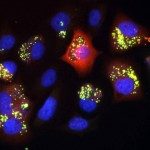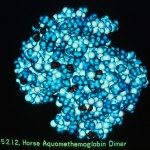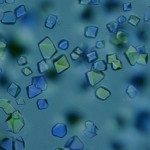Link to Pubmed [PMID] – 38386597
Link to DOI – 10.1128/mbio.00198-24
mBio 2024 Mar; 15(3): e0019824
Malaria symptoms are associated with the asexual multiplication of Plasmodium falciparum within human red blood cells (RBCs) and fever peaks coincide with the egress of daughter merozoites following the rupture of the parasitophorous vacuole (PV) and the RBC membranes. Over the last two decades, it has emerged that the release of competent merozoites is tightly regulated by a complex cascade of events, including the unusual multi-step activation mechanism of the pivotal subtilisin-like protease 1 (Sub1) that takes place in three different cellular compartments and remains poorly understood. Following an initial auto-maturation in the endoplasmic reticulum (ER) between its pro- and catalytic domains, the Sub1 prodomain (PD) undergoes further cleavages by the parasite aspartic protease plasmepsin X (PmX) within acidic secretory organelles that ultimately lead to full Sub1 activation upon discharge into the PV. Here, we report the crystal structure of full-length P. falciparum Sub1 (PfS1FL) and demonstrate, through structural, biochemical, and biophysical studies, that the atypical Plasmodium-specific Sub1 PD directly promotes the assembly of inactive enzyme homodimers at acidic pH, whereas Sub1 is primarily monomeric at neutral pH. Our results shed new light into the finely tuned Sub1 spatiotemporal activation during secretion, explaining how PmX processing and full activation of Sub1 can occur in different cellular compartments, and uncover a robust mechanism of pH-dependent subtilisin autoinhibition that plays a key role in P. falciparum merozoites egress from infected host cells.IMPORTANCEMalaria fever spikes are due to the rupture of infected erythrocytes, allowing the egress of Plasmodium sp. merozoites and further parasite propagation. This fleeting tightly regulated event involves a cascade of enzymes, culminating with the complex activation of the subtilisin-like protease 1, Sub1. Differently than other subtilisins, Sub1 activation strictly depends upon the processing by a parasite aspartic protease within acidic merozoite secretory organelles. However, Sub1 biological activity is required in the pH neutral parasitophorous vacuole, to prime effectors involved in the rupture of the vacuole and erythrocytic membranes. Here, we show that the unusual, parasite-specific Sub1 prodomain is directly responsible for its acidic-dependent dimerization and autoinhibition, required for protein secretion, before its full activation at neutral pH in a monomeric form. pH-dependent Sub1 dimerization defines a novel, essential regulatory element involved in the finely tuned spatiotemporal activation of the egress of competent Plasmodium merozoites.










